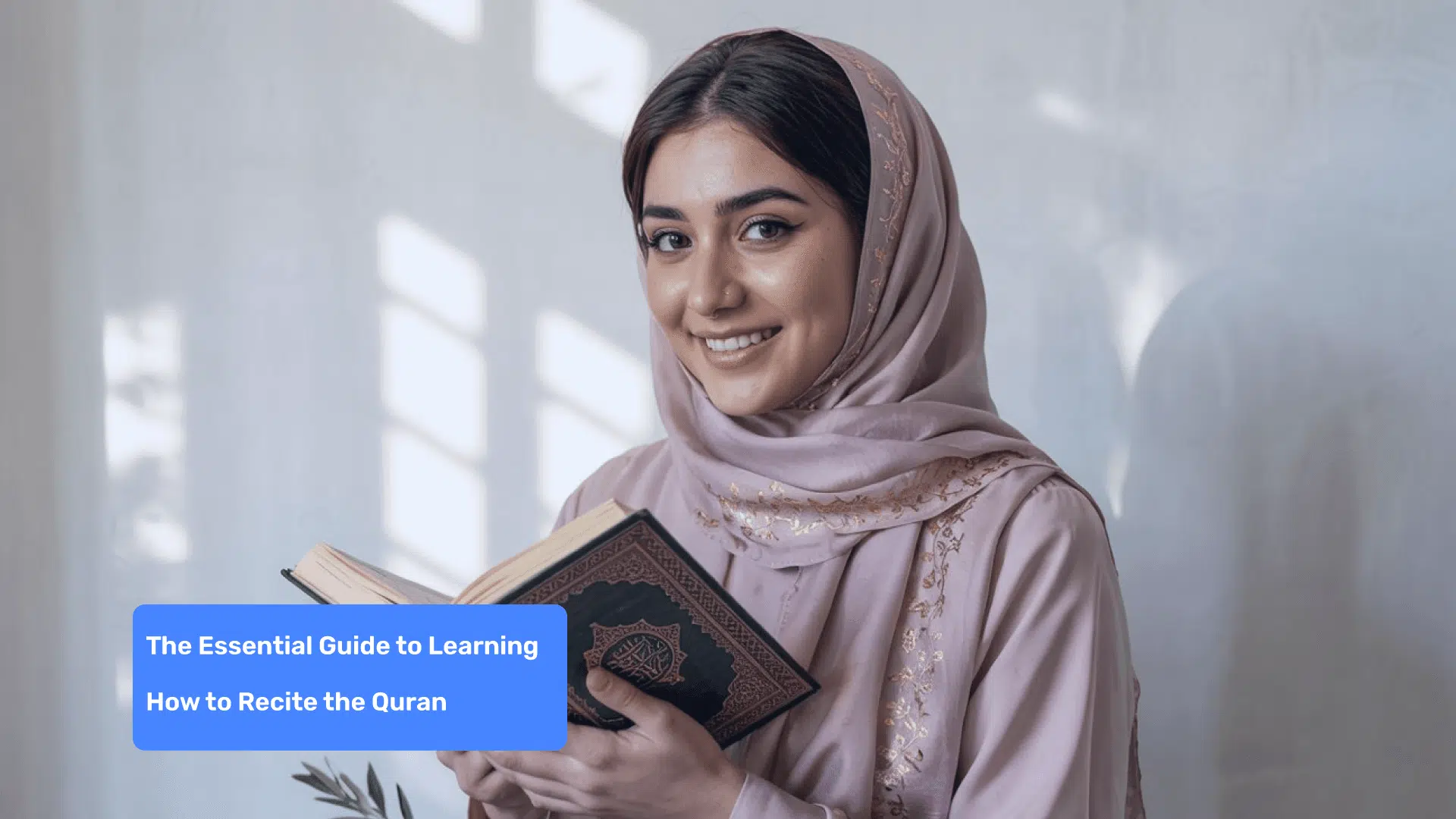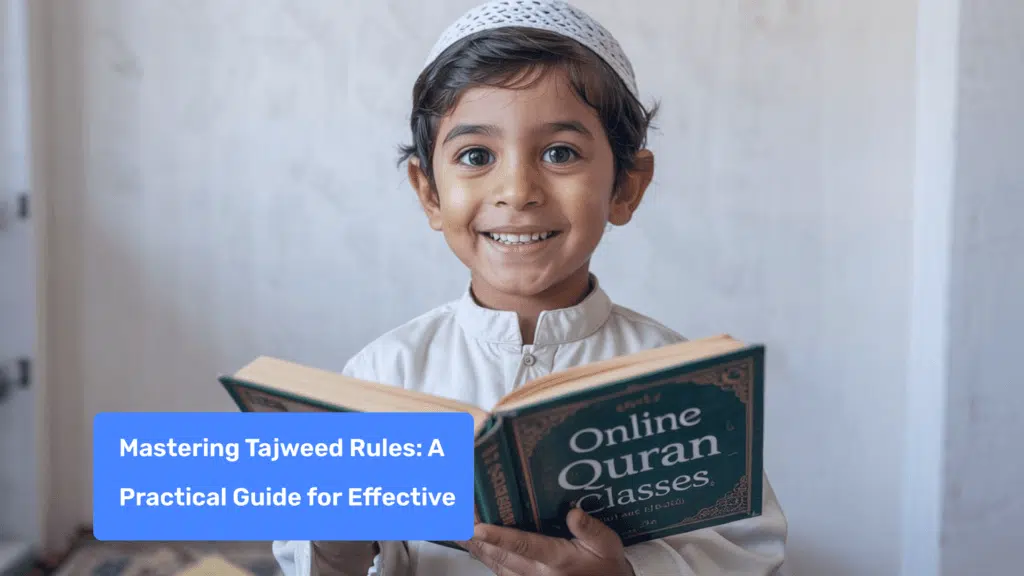Introduction to Quranic Arabic
Arabic is not merely a language; it is the sacred vessel through which Allah’s final revelation was delivered to humanity. The Holy Quran was revealed in Arabic, making it the language of divine communication and spiritual connection for over 1.8 billion Muslims worldwide. Understanding Quranic Arabic transcends ordinary language acquisition—it represents a profound spiritual journey that brings believers closer to the direct word of God.
Unlike modern standard Arabic or regional dialects, Quranic Arabic (also known as Classical Arabic) possesses distinctive linguistic features, vocabulary, and grammatical structures that have been preserved since the 7th century CE. This preservation ensures that readers today engage with the same divine message that was revealed to Prophet Muhammad ﷺ.
Learning Quranic Arabic offers transformative benefits beyond mere translation. While translations provide general meanings, they inevitably lose the linguistic nuances, rhetorical devices, and divine eloquence of the original text. By studying Quranic Arabic, you gain:
- Direct access to Allah’s words without intermediaries
- The ability to understand subtleties lost in translation
- A deeper appreciation of the Quran’s miraculous linguistic structure
- Enhanced spiritual connection during prayer and recitation
- Greater comprehension of Islamic jurisprudence and theology
As Prophet Muhammad ﷺ said: “The best among you are those who learn the Quran and teach it.” This journey of learning Quranic Arabic is thus not only intellectually rewarding but spiritually meritorious.
The Arabic Alphabet and Letters
The foundation of Quranic Arabic begins with mastering its 28 letters, each with distinctive forms depending on their position within words (initial, medial, final, or isolated). Unlike Latin-based alphabets, Arabic is written from right to left and does not traditionally contain vowels in its written form—though the Quran includes diacritical marks to ensure precise pronunciation.
Each Arabic letter possesses unique characteristics that directly impact meaning. For example, the difference between heavy letters (مفخمة) like ص (Saad) and light letters (مرققة) like س (Seen) changes both pronunciation and meaning. The letter ص in “صراط” (path) carries a weighty, reverent quality appropriate for the straight path of Allah, while س in other contexts has a lighter phonetic quality.
Proper pronunciation is paramount in Quranic Arabic. The points of articulation (مخارج الحروف) for each letter must be mastered to ensure correct recitation. For instance:
- The letter ح (Haa) originates from the middle of the throat
- The letter ق (Qaaf) comes from the back of the mouth
- The letter ر (Raa) involves the tip of the tongue
Mastering the Arabic alphabet is a crucial first step in learning Arabic, as it forms the foundation for reading and understanding the Quran.
A structured approach to learning involves:
- Memorizing the alphabet in sequence with correct pronunciation
- Practicing writing each letter in its various forms
- Recognizing letters within simple words
- Combining letters to form basic Quranic vocabulary
- Using specialized resources like “Noorani Qaida” or “Qaida Baghdadiyah” that systematically teach letter recognition and combination
Regular practice with audio guidance from a qualified teacher ensures that your pronunciation aligns with authentic Quranic recitation tradition, establishing a solid foundation for your journey into deeper Quranic studies.
Quranic Verses and Tajweed
Tajweed (تجويد), literally meaning “to improve” or “to make better,” encompasses the rules governing proper Quranic recitation. This science ensures that every letter is given its due rights (حق الحروف) and proper characteristics (مستحق الحروف), preserving the authentic pronunciation as taught by Prophet Muhammad ﷺ.
The significance of Tajweed cannot be overstated in Quranic recitation. Allah commands in Surah Al-Muzzammil (73:4): “And recite the Quran with measured recitation (tarteel).” This divine instruction underscores that proper recitation is not merely recommended but obligatory for preserving the Quran’s integrity. Many students find that enrolling in Quran classes helps them systematically learn and apply Tajweed rules, ensuring accurate and beautiful recitation.
Key Tajweed rules include:
- Noon Sakinah and Tanween Rules: Including Izhar (clear pronunciation), Idgham (merging), Iqlab (conversion), and Ikhfa (hiding)
- Meem Sakinah Rules: Governing how a non-voweled meem interacts with subsequent letters
- Madd Rules: Determining when and how vowels should be elongated
- Waqf Rules: Dictating proper stopping points during recitation
- Qalqalah: The echoing bounce that occurs with certain letters when they are unvoweled
Learning Tajweed requires systematic practice with structured materials. Begin with short surahs like Al-Fatiha and the last ten surahs of Juz’ Amma, progressively working toward longer passages. Record your recitation and compare it with established reciters like Sheikh Mahmoud Khalil Al-Husary or Sheikh Abdul Basit Abdul Samad.
Regular practice sessions should include:
- Listening to expert recitation of a specific verse
- Identifying the Tajweed rules applied
- Practicing the verse with conscious application of these rules
- Receiving feedback from a qualified teacher
Remember that Tajweed is best learned through oral transmission (مشافهة) rather than solely through books or apps. The Prophet ﷺ himself learned the Quran through the angel Jibreel’s recitation and taught his companions through direct oral instruction, establishing a chain of transmission that continues to this day.
Learning Platforms and Resources
The digital age has revolutionized access to Quranic Arabic education, making quality instruction available regardless of geographical location. Online platforms offer structured courses with varying approaches to suit different learning styles. Many platforms offer a combination of Arabic and Quran classes, providing a holistic approach to learning both the language and the sacred text.
Recommended Online Platforms:
- Bayyinah Institute: Founded by Ustadh Nouman Ali Khan, offers comprehensive Arabic programs including the popular “Arabic with Husna” series
- Quranic: Provides one-on-one live sessions with certified teachers
- Studio Arabiya: Offers specialized courses in Quranic Arabic with flexible scheduling
- Madinah Arabic: Provides free, structured lessons progressing from basic to advanced levels
- Qalampir Academy: Features specialized Tajweed and Quranic Arabic programs
Essential Learning Resources:
- Al-Kitaab fi Ta’allum al-‘Arabiyya: A comprehensive textbook series widely used in academic settings
- Madinah Arabic Books: Written by Dr. V. Abdur Rahim, these books use a unique approach focusing on understanding through context
- Gateway to Arabic: A systematic series by Imran Hamza Alawiye that builds vocabulary and grammar skills progressively
- Towards Understanding Quranic Arabic: By Kareema Carol Czerepinski, specifically designed for Quranic Arabic
Digital Tools:
- Quran.com: Offers word-by-word translation and audio recitation
- Quranic Arabic Corpus: Provides detailed grammatical analysis of the entire Quran
- Madinah Arabic App: Interactive lessons complementing the book series
- Anki: Flashcard system for memorizing vocabulary with spaced repetition
While self-study with these resources is valuable, the guidance of a qualified teacher (معلم) remains irreplaceable. Teachers provide personalized feedback, correct pronunciation errors that might otherwise become habitual, and transmit knowledge through an authenticated chain (إسناد) that connects modern students to the tradition of the Prophet ﷺ.
When selecting a teacher, consider their ijazah (certification), teaching methodology, and ability to explain concepts in your native language if you’re a beginner. Many online platforms offer trial lessons to help you find the right match for your learning style.
Bayyinah TV and Quranic Arabic Resources
Bayyinah TV is a renowned online platform that offers a wide range of resources for learning Quranic Arabic. With a team of experienced and qualified Quran teachers, Bayyinah TV provides students with the opportunity to learn Quranic Arabic in a comprehensive and engaging manner. The platform offers a variety of courses and resources, including video lessons, audio recordings, and written materials, all designed to help students deepen their understanding of the Quran and improve their Arabic language skills.
Bayyinah TV’s Quranic Arabic resources are carefully crafted to cater to students of all levels, from beginners to advanced learners. The platform’s courses cover various aspects of Quranic Arabic, including grammar, vocabulary, and pronunciation, as well as Tajweed rules and Islamic studies. With Bayyinah TV, students can learn Quranic Arabic at their own pace and schedule, making it an ideal resource for those who want to improve their Arabic language skills and deepen their understanding of the Quran.
Islamic Studies and Quranic Arabic
Quranic Arabic and Islamic studies form a symbiotic relationship—each enriching and deepening understanding of the other. While translations provide a general understanding of Islamic concepts, the subtle linguistic features of Quranic Arabic often contain layers of meaning that directly impact theological, legal, and spiritual interpretations.
Consider the word “taqwa,” commonly translated as “God-consciousness” or “piety.” The Arabic root (و-ق-ى) conveys the notion of protection and prevention, suggesting that taqwa involves protecting oneself from divine displeasure by following Allah’s commands and avoiding His prohibitions. This nuanced understanding emerges only through familiarity with Arabic morphology.
Understanding the Quran from a historical perspective allows students to appreciate the context and background of its teachings, enriching their overall comprehension.
Islamic scholarship has traditionally viewed Arabic proficiency as essential for:
- Tafsir (Exegesis): Understanding the context, occasion of revelation (asbab al-nuzul), and linguistic nuances that shape interpretation
- Fiqh (Jurisprudence): Deriving legal rulings from textual evidence with precision
- Aqeedah (Theology): Grasping subtle distinctions in verses describing Allah’s attributes
- Seerah (Prophetic Biography): Appreciating the eloquence and wisdom in the Prophet’s ﷺ statements
The great scholar Imam al-Shafi’i emphasized this connection, stating: “No one should speak on the Book of Allah without having thorough knowledge of the Arabic language.” Similarly, Imam Malik considered knowledge of Arabic indispensable for those interpreting religious texts.
For contemporary students, integrating Quranic Arabic with Islamic studies involves:
- Studying the grammatical structures of key Quranic passages related to fundamental beliefs
- Analyzing how different interpretations might emerge from linguistic considerations
- Exploring how classical scholars used Arabic linguistics to derive rulings
- Examining the rhetorical devices (balagha) that convey the Quran’s miraculous nature
This integrated approach transforms one’s relationship with Islamic texts from passive consumption to active engagement, enabling students to trace scholarly conclusions to their textual roots and develop a more nuanced understanding of their faith.
Quranic Arabic Step-by-Step
Mastering Quranic Arabic requires a methodical approach that builds confidence through progressive achievement. The journey typically spans several stages, each establishing essential foundations for subsequent learning. Skilled instructors play a crucial role in teaching Arabic, guiding students through each stage of their learning journey with effective methodologies.
Stage 1: Alphabet and Basic Reading (2-3 months)
- Master the alphabet with correct pronunciation
- Learn to connect letters to form words
- Practice reading with vowel marks (tashkeel)
- Build foundational vocabulary through common Quranic terms
- Complete a basic primer like Noorani Qaida
Stage 2: Essential Grammar and Vocabulary (4-6 months)
- Learn basic sentence structures
- Understand the three-letter root system of Arabic words
- Master essential verb forms and tenses
- Build vocabulary focusing on frequently occurring Quranic words
- Begin analyzing simple verses grammatically
Stage 3: Intermediate Comprehension (6-8 months)
- Study more complex grammatical structures
- Learn morphological patterns (awzan)
- Expand vocabulary to include less frequent terms
- Practice translation of short surahs
- Begin basic word-by-word analysis of selected passages
Stage 4: Advanced Analysis (8-12 months)
- Master complex grammatical constructions
- Understand rhetorical devices and literary features
- Study classical Arabic poetry for contextual understanding
- Analyze grammatical nuances that affect interpretation
- Begin independent reading of simplified tafsir texts
Stage 5: Scholarly Engagement (Ongoing)
- Engage with classical Arabic commentaries
- Understand interpretive differences based on linguistic analysis
- Develop the ability to derive meanings independently
- Connect linguistic features to theological and legal implications
Effective learning strategies include:
- Daily consistency: Even 15-30 minutes daily yields better results than irregular longer sessions
- Multi-sensory engagement: Combine reading, writing, speaking, and listening
- Contextual learning: Study words and grammar in the context of actual Quranic verses
- Spiral curriculum: Revisit previously learned concepts at progressively deeper levels
- Peer learning: Practice with fellow students to reinforce understanding
Remember that learning curves vary; some concepts may click immediately while others require repeated exposure. Patience and persistence are essential virtues on this journey, as reinforced by the Quranic reminder: “Allah does not burden a soul beyond what it can bear” (2:286).
Quranic Arabic Learning Methods
Quranic Arabic learning methods vary depending on the individual’s learning style and goals. Some common methods include:
- Immersion: Surrounding oneself with the Arabic language by listening to Arabic music, watching Arabic movies, and speaking with native Arabic speakers. This method helps in developing a natural feel for the language and improves listening and speaking skills.
- Grammar-based learning: Focusing on the rules of Arabic grammar and syntax to build a strong foundation in the language. This method is essential for understanding the structure of Quranic verses and their precise meanings.
- Vocabulary building: Learning new Arabic words and phrases through flashcards, vocabulary lists, and language learning apps. Building a robust vocabulary is crucial for understanding and interpreting Quranic verses.
- Tajweed-based learning: Focusing on the rules of Tajweed, which govern the pronunciation and recitation of the Quran. Proper application of Tajweed rules ensures that the recitation is both beautiful and accurate.
- Contextual learning: Learning Quranic Arabic through the study of Quranic verses and their historical and cultural context. This method provides a deeper understanding of the Quranic message and its relevance to the Islamic world.
Regardless of the method, consistent practice and review are essential for improving Quranic Arabic skills. With the right resources and support, anyone can learn Quranic Arabic and deepen their understanding of the Quran.
Ijaazah Program and Certification
The ijazah (literally “permission”) represents one of Islamic education’s most venerable traditions—a certification system dating back to the Prophet Muhammad ﷺ himself. Unlike modern academic credentials, an ijazah in Quranic studies signifies not merely knowledge acquisition but authorized transmission within an unbroken chain of qualified teachers extending back to the Prophet ﷺ. The ijazah program often includes extensive Arabic studies, covering grammar, vocabulary, and recitation techniques.
Types of Quranic Ijazah:
- Ijazah in Recitation (Ijazah fil-Qira’ah): Certifies mastery of proper Quranic recitation, often in one or more of the ten authentic Quranic readings (qira’at)
- Ijazah in Memorization (Ijazah fil-Hifz): Acknowledges complete memorization of the Quran with proper recitation
- Ijazah in Teaching (Ijazah fil-Tadrees): Authorizes the holder to teach others, passing on the tradition
- Ijazah in Tafsir: Certifies proficiency in Quranic interpretation and related sciences
Obtaining an ijazah involves several requirements:
- Finding a Qualified Teacher: The teacher must possess their own ijazah in an unbroken chain
- Mastering the Subject Matter: Demonstrating complete proficiency in the relevant discipline
- Demonstrating Character: Exhibiting the moral conduct befitting a carrier of sacred knowledge
- Oral Examination: Reciting or explaining material from memory before the teacher and sometimes a committee
- Written Authorization: Receiving a formal certificate detailing the specific texts or material covered and the chain of transmission
The process typically requires dedicated study ranging from several months for basic recitation ijazah to many years for comprehensive authorizations. Modern adaptations include online ijazah programs that maintain traditional standards while accommodating contemporary circumstances.
The benefits of pursuing an ijazah extend beyond certification:
- Connection to a living educational tradition spanning fourteen centuries
- Personalized guidance from experienced scholars
- Precision in recitation and understanding impossible through self-study alone
- Spiritual blessing (barakah) from participating in the Prophetic tradition of knowledge transmission
- Qualification for teaching positions in traditional Islamic institutions
While not everyone may pursue formal ijazah certification, understanding this system provides valuable insight into how Quranic knowledge has been preserved with remarkable fidelity across generations and continents.
Testimonials and Success Stories
The journey of mastering Quranic Arabic transforms lives in profound and unexpected ways. These authentic testimonials from diverse learners illustrate the impact of persistent study:
Sarah, 35, Physician from Canada: “As a busy medical professional, I never thought I’d find time to learn Quranic Arabic. I started with just 20 minutes daily during my commute using audio lessons. Three years later, I can understand much of what I recite in prayers. The emotional connection I now feel with the Quran during Ramadan is indescribable—it’s like finally hearing Allah’s words directly after years of reading translations. Sarah’s journey to learn Arabic has not only enhanced her understanding of the Quran but also deepened her spiritual connection.”
Ibrahim, 42, Business Analyst from Nigeria: “Learning Quranic Arabic in my forties seemed daunting, especially without any language learning background. I failed numerous times before finding a teacher who understood my learning style. His step-by-step approach helped me overcome the initial hurdles, and now I’ve completed my first word-by-word analysis of Surah Yaseen. My advice? Find a teacher who adapts to your learning pace and never give up.”
Aisha, 28, Homemaker from Indonesia: “As a mother of three young children, I thought serious Arabic study would have to wait until they were older. Instead, I turned it into a family activity, practicing with my children every day after Maghrib prayer. Not only have I progressed in my studies, but my oldest son, now seven, has developed an extraordinary interest in Arabic and often corrects my pronunciation! We’re growing in knowledge together.”
Muhammad, 60, Retired Engineer from Egypt: “Though I grew up speaking Egyptian Arabic, Quranic Arabic remained largely inaccessible to me. After retirement, I decided to dedicate myself to understanding the Quran. The structured approach of modern courses helped bridge the gap between my dialect and classical Arabic. After two years of consistent study, I recently led Taraweeh prayers at our local mosque for the first time—a lifetime dream fulfilled.”
Fatima, 21, University Student from Turkey: “When I began studying Islamic history at university, I realized how essential Quranic Arabic was for primary source research. I joined an intensive online program with weekly assignments and accountability partners. The combination of academic motivation and spiritual connection accelerated my progress. I can now read basic classical texts with a dictionary, opening new dimensions in my research and personal worship.”
These diverse experiences highlight several common success factors:
- Consistent daily practice, even in small increments
- Finding teaching methods that match individual learning styles
- Connecting the language to personal or spiritual goals
- Building supportive learning communities
- Combining traditional methods with modern technology
- Persevering through initial difficulties
As these testimonials demonstrate, the journey of learning Quranic Arabic welcomes everyone—regardless of age, background, or circumstances—offering unique rewards that transcend ordinary language acquisition.
Program Objectives and Class Timings
Effective Quranic Arabic programs establish clear learning objectives and thoughtful scheduling to maximize student progress. Whether you’re evaluating existing programs or developing your own study plan, consider these essential components:
Core Program Objectives:
- Mechanical Reading Proficiency: Accurately pronouncing Arabic letters and words with proper articulation points
- Tajweed Mastery: Applying recitation rules correctly for authentic Quranic reading
- Morphological Understanding: Recognizing word patterns and their semantic implications
- Syntactic Analysis: Identifying grammatical structures and their functions
- Vocabulary Acquisition: Building recognition of high-frequency Quranic terms
- Contextual Comprehension: Understanding verses within their textual and historical context
- Translation Skills: Developing ability to convey meanings accurately in one’s native language
These objectives should be sequenced logically with clear milestones to track progress. Effective programs typically establish both short-term goals (weekly/monthly) and long-term outcomes (quarterly/yearly) with regular assessment.
Optimal Class Scheduling:
Research and experience suggest that language acquisition benefits from:
- Distributed Practice: Regular shorter sessions outperform occasional intensive ones
- Interleaved Learning: Alternating between different skills and topics
- Spaced Repetition: Reviewing material at strategic intervals to optimize retention
Most successful programs offer:
- Flexible Scheduling Options:
- Weekly live classes (typically 2-3 sessions of 60-90 minutes)
- Supplementary self-study materials for daily practice (20-30 minutes)
- Recording access for missed sessions
- Office hours for personalized assistance
- Balanced Content Distribution:
- Reading and pronunciation (30%)
- Grammar and analysis (30%)
- Vocabulary building (20%)
- Practical application and translation (20%)
- Multi-Level Programming:
- Beginner: Focus on alphabet, pronunciation, and basic vocabulary
- Intermediate: Emphasis on grammar, simple verse analysis
- Advanced: Complex grammatical structures, rhetorical devices, deeper exegesis
For working professionals and students, programs often offer:
- Evening and weekend options
- Intensive vacation courses
- Self-paced online alternatives with periodic live check-ins
- “Mommy and me” classes accommodating parents with young children
When establishing your personal study schedule, consider your natural energy patterns and existing commitments. Many successful learners dedicate consistent early morning or late evening sessions when mental focus is optimal and interruptions minimal.
Remember that consistency trumps duration—15 minutes daily yields better results than 2 hours once weekly. As the Arabic proverb states: “Knowledge is a sea without shores,” requiring patient, persistent navigation rather than hasty plunging.
Unlocking the Beauty of Quranic Arabic
Beyond grammatical rules and vocabulary lists lies the true miracle of Quranic Arabic—its unparalleled linguistic beauty and rhetorical sophistication. The Quran itself challenges humanity: “If mankind and jinn gathered together to produce the like of this Quran, they could not produce the like of it, even if they were to help one another” (17:88).
What makes Quranic Arabic uniquely beautiful and powerful?
Perfect Precision: Every word in the Quran occupies its precise position with exact meaning. The placement of a term, its morphological form, and its syntactical relationship creates layers of significance impossible to fully capture in translation. For instance, the subtle shift from past to present tense in narrating stories creates an immediacy that brings ancient events into the present moment of the reader.
Linguistic Economy: The Quran achieves remarkable conciseness without sacrificing clarity. A single Arabic word often requires entire phrases to translate adequately. The term “فلاح” (falah) encompasses success, prosperity, well-being, and ultimate salvation—concepts requiring multiple English words to convey.
Phonetic Harmony: The sound patterns of Quranic verses create musical rhythms that touch the heart even before the mind comprehends meaning. The alternating long and short syllables, the strategic placement of emphatic letters, and the carefully balanced phrases produce an oral and auditory experience that transcends ordinary speech.
Multi-Layered Imagery: Quranic descriptions employ vivid, powerful imagery that functions on multiple levels simultaneously. When describing Paradise as “gardens beneath which rivers flow,” the Arabic construction evokes not only physical beauty but spiritual transparency and divine blessing flowing beneath the surface of faithful lives.
Perfect Balance: The Quran maintains remarkable equilibrium between seemingly opposite qualities—between hope and fear, between detail and generality, between logical argumentation and emotional appeal. This balance creates a text that addresses the total human experience rather than isolated facets.
As your Arabic skills develop, you’ll gradually access these dimensions of Quranic beauty:
- Begin by appreciating the phonetic patterns through careful listening and recitation
- Progress to recognizing repeated grammatical structures and their implications
- Advance to identifying rhetorical devices like metaphor, simile, and wordplay
- Eventually develop sensitivity to the intertextual relationships between passages
Scholar Ibn Ata’illah al-Sakandari captured this journey: “The Quran’s miracle lies not only in its inimitability but in its inexhaustibility—those who recite it never tire of it, and those who study it never reach its end.”
As you progress in Quranic Arabic, you’ll experience the truth of Allah’s description: “This is a blessed Book which We have revealed to you, that they might reflect upon its verses and that those of understanding would be reminded” (38:29).
Quranic Arabic and Personal Growth
Learning Quranic Arabic can have a profound impact on personal growth and spiritual development. By studying the Quran in its original language, individuals can gain a deeper understanding of the divine message and develop a stronger connection with Allah. Quranic Arabic learning can also improve cognitive skills, such as memory and concentration, and enhance cultural awareness and appreciation.
Moreover, learning Quranic Arabic can be a transformative experience that fosters personal growth and self-improvement. As individuals delve deeper into the Quran, they may experience a sense of spiritual awakening, increased empathy and compassion, and a greater sense of purpose and direction. With Quranic Arabic learning, individuals can cultivate a deeper understanding of themselves and the world around them, leading to a more fulfilling and meaningful life.
By incorporating Quranic Arabic learning into one’s daily routine, individuals can experience the many benefits of this sacred language and deepen their connection with the Quran and Allah. Whether through online courses, language learning apps, or traditional classroom instruction, Quranic Arabic learning is an accessible and rewarding pursuit that can have a lasting impact on personal growth and spiritual development.
Conclusion
The journey of mastering Quranic Arabic represents one of the most rewarding spiritual and intellectual endeavors available to Muslims and interested learners alike. This path connects you directly to the divine revelation in its original form, opening dimensions of understanding, appreciation, and connection impossible through translation alone.
As we’ve explored throughout this guide, learning Quranic Arabic:
- Provides direct access to Allah’s words without intermediary filters
- Deepens spiritual connection during worship and personal reflection
- Builds a foundation for understanding Islamic sciences authentically
- Connects you to a fourteen-century tradition of scholarship and devotion
- Transforms your relationship with the Quran from passive reception to active engagement
The journey requires commitment, patience, and structured learning—beginning with alphabet mastery, progressing through grammar and vocabulary, developing recitation skills with proper Tajweed, and ultimately engaging with the linguistic miracle of the Quran directly.
Modern learners benefit from unprecedented access to quality resources—from traditional texts to innovative online platforms, from one-on-one instruction to interactive applications. This accessibility means that geographic location, time constraints, and previous educational background need not be insurmountable barriers.
Remember that this journey is both communal and deeply personal. While teachers, classmates, and study partners provide essential support and accountability, your unique relationship with the Quran will develop through consistent personal effort and divine assistance. As the Quran itself promises: “And We have certainly made the Quran easy for remembrance, so is there any who will remember?” (54:17)
Whether you aspire to basic reading ability, conversational fluency, or scholarly mastery, approach each step with sincere intention (niyyah), trusting that sincere effort will be blessed. The Prophet Muhammad ﷺ assured us: “Whoever follows a path in pursuit of knowledge, Allah makes easy for them a path to Paradise.”
Begin your journey today—with realistic goals, appropriate resources, and unwavering commitment. The treasures of Quranic understanding await, offering insights, inspiration, and spiritual nourishment that deepen with every new level of linguistic mastery.
The first word revealed in the Quran was “اقرأ” (Read!). Consider this divine command your personal invitation to embark on the transformative journey of Quranic Arabic—a journey that begins with a single letter and continues into eternity.
















